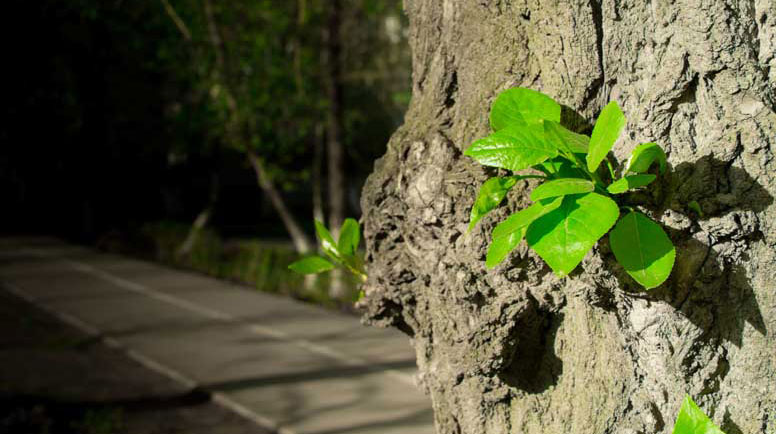DON'T TRY THIS AT HOME. WHEN TO CALL A PROFESSIONAL
6 situations when you should ditch DIY and get professional help
For trusted expertise and superior results,
find a landscape professional near you.

Sometimes a tree starts looking more like a shrub, with a bushy clump of young stems sprouting from the base or from a spot on the trunk. Those stems are called suckers, because they zap water and nutrients from the main tree. As suckers are unhealthy for trees and they are unsightly, it’s important to know how to eliminate them and when possible, how to prevent them in the first place.
Prune Them
Prune tree suckers regularly while they are still young. Use sharp pruners and make a clean cut as close to the base of each sucker as possible.
Loppers—long-handled pruners—are useful for reaching above your head. A pole pruner can stretch even farther, but it can be hard to handle; be careful not to damage the tree’s bark with it.
If suckers are so high in a tree you’d need a ladder to reach them, it’s best to have a professional remove them.
Causes
In general there are two reasons a tree might start growing suckers: because it’s under stress, or because a graft has failed.
Stress. Suckers are a tree’s attempt to grow more branches, often in response to some kind of injury. If the roots have been damaged, suckers may grow from the base of the trunk. If suckers grow higher on the trunk, they’re called watersprouts and they are usually at the site of a pruning wound, a crack or some other damage.
This response is the reason it’s important to prune suckers before they’re so old that their tender skin turns to bark. When you prune a large, woody sucker, you often create a wound that may prompt the tree to grow even more suckers.
Suckers can be a sign of age. Many trees sucker more as they grow old and start to decay.
They also can result from a disease or pest. If something such as a boring insect is interfering with a tree’s ability to get water and nutrients up to its branches, it may divert resources to suckers instead.
Some tree species are naturally more prone to suckering than others. But when a large tree has an abundance of suckers, it’s a good idea to have it assessed by a tree care professional to make sure there’s nothing seriously wrong.
Grafts. Many trees grown in nurseries are actually two trees—the trunk and branches of one kind of tree spliced onto the roots of another, usually a species that is more hardy and tolerant. Trees may be grafted for the sake of hardiness; to preserve the special ornamental characteristics of a cultivated variety; or because it’s just easier for nurseries to grow some species that way.
Sometimes, though, the graft near the base of the trunk fails and the rootstock—the part with the roots—starts sending out shoots of its own: suckers.
Grafts often fail on small ornamental trees such as crabapples and redbuds, making them prone to suckering. You can tell the cause is a failed graft if the leaves on the sucker are different from the leaves on the rest of the tree.
If you don’t prune out the suckers, the rootstock of a flowering tree can outcompete and overcome the tree that was grafted to it. You may not even notice until your crabapple blooms with different-colored flowers than you’re used to.
Tree suckers are not normally a significant problem but they must be dealt with to preserve the long-term health of a tree.
We recently updated our Privacy Policy. By continuing to use this website, you acknowledge that our revised Privacy Policy applies.